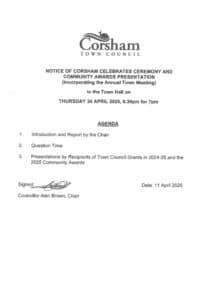As well as play areas and facilities such as the skate park and BMX track, the Town Council also looks after a number of open spaces and woodlands. These are typically used by dog walkers or residents going out for a walk.
The Town Council recognises that, as well as recreational value, and helping with wellbeing, these areas can also play a role in improving biodiversity in our area. In recent years, the Town Council has sown wildflower areas at its Springfield, Coppershell and Neston recreation areas, as well as changing its mowing regime to improve the grassland at Beechfield. The Council has also planted in excess of 100 trees at locations including Beechfield, Coppershell, the Lacock Road cemetery and roadside verges (especially along Valley Road).
The Town Council is keen to ensure that its open spaces deliver benefits for wildlife and carbon capture as well as providing amenity space for residents. To this end, we have employed a team of consultants to produce a Biodiversity Action Plan which will advise us on management of our open spaces. It is likely that we will look to create new features in our open spaces that will benefit wildlife.
If you are interested in helping the Town Council to manage wildflower sites and plant trees and would be willing to volunteer a few hours of your time, please contact Beth Searle, the Town Council’s Environmental Project Officer, at bsearle@corsham.gov.uk or visit the Climate Change and Environment section of our website.
You can read about two of the areas we manage below.
Beechfield Nature Area
Beechfield Nature Area is situated along Middlewick Lane, in Pickwick, Corsham. The nature area was formerly part of the grounds of Beechfield House and the land – approximately two hectares in size – was transferred to the Council’s ownership in 2002.
The Council’s aim is to improve the amenity, recreational and nature conservation value of Beechfield, widening its appeal to the people of Corsham, while retaining its original character. In 2013, following advice from the Wiltshire Wildlife Trust, a wildlife pond was constructed at the western end of the site. The pond is now inhabited by a wide range of plants and small creatures.
There is rarely a moment when something is not happening at Beechfield, given the range of birds, animals and insects attracted to what is officially described as an “open and wooded limestone upland”.
Plants present include Bee Orchid, Meadow Cranesbill, Birds Foot Trefoil. Herb Robert, Meadow Vetching, Red Bartsia, Common Fleabane and Cowslips. The mature and young trees on the site include Birch, Sycamore, Maple, Ash, Elm, Poplar, Cherry, Oak and Beech. And bird and animal lovers may well spot Partridges, Green Woodpeckers, Deer, Foxes, Rabbits, Bullfinches, Chiffchaffs, Goldcrests, Lesser Spotted Woodpeckers, Tawny Owls, Long Tailed Tits and multiple species of Bats. (Bird and bat boxes were made and fitted to mature trees by the British Trust for Conservation Volunteers.)
Members of the Town Council’s Nature Conservation Volunteer Group have planted trees at the site, all of which are registered as part of The Queen’s Green Canopy project for the Platinum Jubilee in 2022.
Beechfield is for everyone to enjoy but as it is within a Conservation Area, camping, bonfires and barbecues are not permitted. There is no parking at the site and parking is very limited on Middlewick Lane, which is a residential street, so it is best to park elsewhere and walk to Beechfield if possible.
For more information, you can read the Town Council’s Beechfield Management and Maintenance Plan which was put together with the help of Wiltshire Wildlife Trust.
The Batters
The Batters runs alongside the Great Western railway line and Byde Mill Brook, from Pound Pill/Prospect at one end to Brook Drive at the other. The area was used by the Scots Guards in 1915, during the First World War, for trench-digging and realistic training before they headed to France.
The Town Council owns and manages The Batters specifically to protect and encourage wildlife, while permitting public access. It’s 1.5 hectares are maintained as open space, with a woodland walk, with footpaths and mown grass. Volunteer groups often support the Town Council’s work and have helped clear scrub and vegetation, plant trees, re-lay paths and rebuild the steps.
The woodland area consists mainly of Ash and Hawthorn, with Sycamore and Elm, in varying sizes and condition. Ground flora includes Ground Elder, Wild Garlic, Cow Parsley and Dogs Mercury. Part of the footpath and brook – classified as a Main River by the Environment Agency in 2004 – go through the lower area of the woodland. There are several mature trees here, including a significant Wych Elm, along with wildlife attracted by the stream, which has a range of ferns along its bank.




